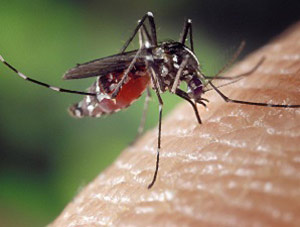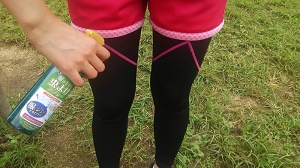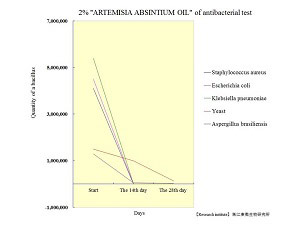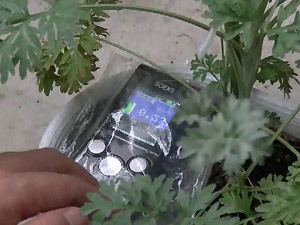Ange vert™ 虫よけスプレー
薬用蒸留酒の素材『ニガヨモギ』
スイス発祥の蒸留酒「アヴサン」文化を生み出した植物「ニガヨモギ」
「ニガヨモギ」とは?
What is "Artemisia absinthium"?
What is "Artemisia absinthium"?
| 科名・属名
(Family and genus names) | キク科ヨモギ属(Asteraceae, Artemisia) |
| 学名(Scientific Name) | Artemisia absinthium |
| 英名(English Name) | ワームウッド(Wormwood) |
| 原産地(Origin) | スイス(Switzerland) |
| 生息地(Habitat area) | 北アメリカ、中央アジア、東アジア、北アフリカに分布
Distributed in North America, Central Asia, East Asia, and North Africa |

「ニガヨモギ」の歴史
※Please scroll down for the English explanation.※
- 日本には、江戸時代末期に渡来したと言われている。
- 「Carl von Linne(リンネ)」著の「Species Plantarum(植物の種)」(1753年)に掲載された植物の一つ。
- ニガヨモギを用いた蒸留酒「アヴサン(absinthe)」は、スイスのヴァル・ドゥ・トラヴェール(Val de Travers)が発祥の地である。
- イスラーム文明を代表する医学者「イブン・スィーナ(アヴィケンナ)」は「ニガヨモギ」には食欲増進作用があるとしていた。(980〜1037年)
- 10世紀後半設立のヨーロッパ最古の医学校「Salerno(サレルノ)医学校」(イタリア)では、船酔いに効果があると教えていた。
- その後は、リウマチ、ペスト、コレラ、扁桃腺炎、中耳炎、虫歯、駆虫薬(虫下し)、衣類の防虫薬などとしても利用されてきた。
- 18世紀には、スイス人医師「Pierre Odinare(ピエール・オーディナーレ)」が、「ニガヨモギ」を原料として、蒸留により得た「アブサン」の処方を考案、当時のフランス軍はこれを解熱薬として用いていたと言われる。
※上記内容は、商品の効果効能を保証するものではありません。

「ニガヨモギ」に関する近年の研究
※Please scroll down for the English explanation.※
- 「ニガヨモギ」に関する国際平和協力協定
「ニガヨモギ」を国際平和の為の使用に関して互いに協力することでスイスのアヴサン栽培協会理事長と協定を結んだ。
- 2006年には、「ニガヨモギ」に含まれる成分「アルテミシニン類」が、以下の病原性微生物の活性を抑える働きがあると報告されている。(引用文献:特表2006-504787)
・デングウイルス(Dengue virus)
・C型肝炎ウイルス(hepatitis C virus:HCV)
・牛ウイルス性下痢ウイルス(bovine viral diarrhea virus:BVDV)
・豚熱ウイルス(旧:豚コレラウイルス:Pestivirus C)を含むフラビウイルス科(Family Flaviviridae)のウイルス
など - 近年では、薬学士の中村孝男により、「ニガヨモギ」の蒸留液や抽出エキスが、以下の病原性微生物の活性を抑える働きがあると報告されている。
・ヒト免疫不全ウイルス(human immunodeficiency virus:HIV)
・新型コロナウイルス(severe acute respiratory syndrome coronavirus 2:SARS-CoV-2)
・SARSウイルス(Severe acute respiratory syndrome coronavirus:SARS-CoV)
※重症急性呼吸器症候群 (Severe acute respiratory syndrome:SARS)の病原体
・A型インフルエンザウイルス(Influenza A virus)
・ノロウイルス(ノーウォークウイルス:Norwalk virus)
※ノロウイルスは属名であり、種名はノーウォークウイルス
※活性抑制試験は、代替ウイルスのネコカリシウイルス(feline calicivirus:FCV)で実施
など - また中村孝男は、以下の菌類に対しての除菌効果も確認している。
・黄色ブドウ球菌(Staphylococcus aureus)
・O-157(腸管出血性大腸菌)を含む大腸菌(Escherichia coli)
・カンジダ菌(カンジダ・アルビカンス:Candida albicans)
・緑膿菌(Pseudomonas aeruginosa)
・芽胞形成セレウス菌(Bacillus cereus)
など
※上記内容は、商品の効果効能を保証するものではありません。

「ニガヨモギ」の近年の利用
※Please scroll down for the English explanation.※
- 防腐剤の補助的役割で使用。
・化粧品利用
化粧品全成分表示名称「ニガヨモギエキス」や「ニガヨモギ油」と表示される。
この表示が使用されるには、基原植物の学名が「Artemisia absinthium」のみに限定。
自生している「ニガヨモギ」を収穫する時、他の近縁種も混在して自生しているため、この学名「Artemisia absinthium」のみを選択的に収穫することが困難。
これら表示名称のニガヨモギ由来原料を化粧品で使用する際、原産地や基原植物の由来証明の確認を行うことが好ましい。
・清涼飲料水、加工加工食品、サプリメント、菓子など食品類で使用する場合は、食品添加物「苦味料」としては「ニガヨモギ抽出物」、食品として使用する場合は、「ニガヨモギエキス」と表記する。

"Artemisia absinthium",
a material for medicinal distilled spirits
History of Wormwood
- It is said to have been introduced to Japan at the end of the Edo period.
- It is one of the plants listed in Carl von Linne's Species Plantarum (1753).
- The distilled liquor "absinthe" made from wormwood originated in Val de Travers, Switzerland.
- Ibn Sina (Avicenna), a leading Islamic physician, believed that wormwood had an appetite-stimulating effect. (980-1037)
- The Salerno Medical School (Italy), the oldest medical school in Europe, founded in the late 10th century, taught that it was effective against seasickness.
- Afterwards, it was also used to treat rheumatism, plague, cholera, tonsillitis, otitis media, tooth decay, as an anthelmintic (deworming agent), and as an insect repellent for clothing.
- In the 18th century, Swiss physician Pierre Odinare devised a formula for absinthe, which was obtained by distilling wormwood, and it is said that the French army at the time used it as an antipyretic.
"Artemisia absinthium",
the plant that gave birth to the Swiss distilled spirit "Absinthe"
Recent Research on Wormwood
- International Peace Cooperation Agreement Regarding Wormwood
An agreement was concluded with the President of the Swiss Absinthe Growers Association to cooperate in the use of Wormwood for international peace.
- In 2006, it was reported that the compound artemisinin contained in Wormwood inhibits the activity of the following pathogenic microorganisms: (Reference: JP2006-504787)
・Dengue virus
・Hepatitis C virus (HCV)
・Bovine viral diarrhea virus (BVDV)
・Flaviviridae viruses, including classical swine fever virus (formerly known as swine cholera virus, Pestivirus C)
etc.
- In recent years, pharmacist Takao Nakamura has reported that wormwood distillates and extracts have the ability to suppress the activity of the following pathogenic microorganisms:
・Human immunodeficiency virus (HIV)
・Severe acute respiratory syndrome coronavirus 2 (SARS-CoV-2)
・SARS virus (SARS-CoV)
*The causative agent of severe acute respiratory syndrome (SARS)
・Influenza A virus
・Norovirus (Norwalk virus)
*Norovirus is the genus name, and the species name is Norwalk virus.
*Activity inhibition tests were conducted using the surrogate virus, feline calicivirus (FCV).
etc.
- Takao Nakamura has also confirmed the disinfecting effect against the following fungi.
・Staphylococcus aureus
・Escherichia coli, including O-157 (enterohemorrhagic E. coli)
・Candida albicans
・Pseudomonas aeruginosa
・Bacillus cereus
and others
Recent Uses of "Wormwood"
- Used as a supplementary preservative.
・Use in Cosmetics
The full ingredient list for cosmetics is labeled "Wormwood Extract" or "Wormwood Oil."
To qualify for this label, the source plant must have the scientific name "Artemisia absinthium."
When harvesting wild Wormwood, it often grows alongside other closely related species, making it difficult to selectively harvest only the source plant.
When using Wormwood-derived ingredients under these labeling names in cosmetics, it is recommended to verify the country of origin and the provenance of the source plant.
・Soft drinks, processed foods, supplements, confectionery, etc.
When used in foods, the food additive "bittering agent" is labeled "Wormwood Extract," and when used in foods, it is labeled "Wormwood Extract."